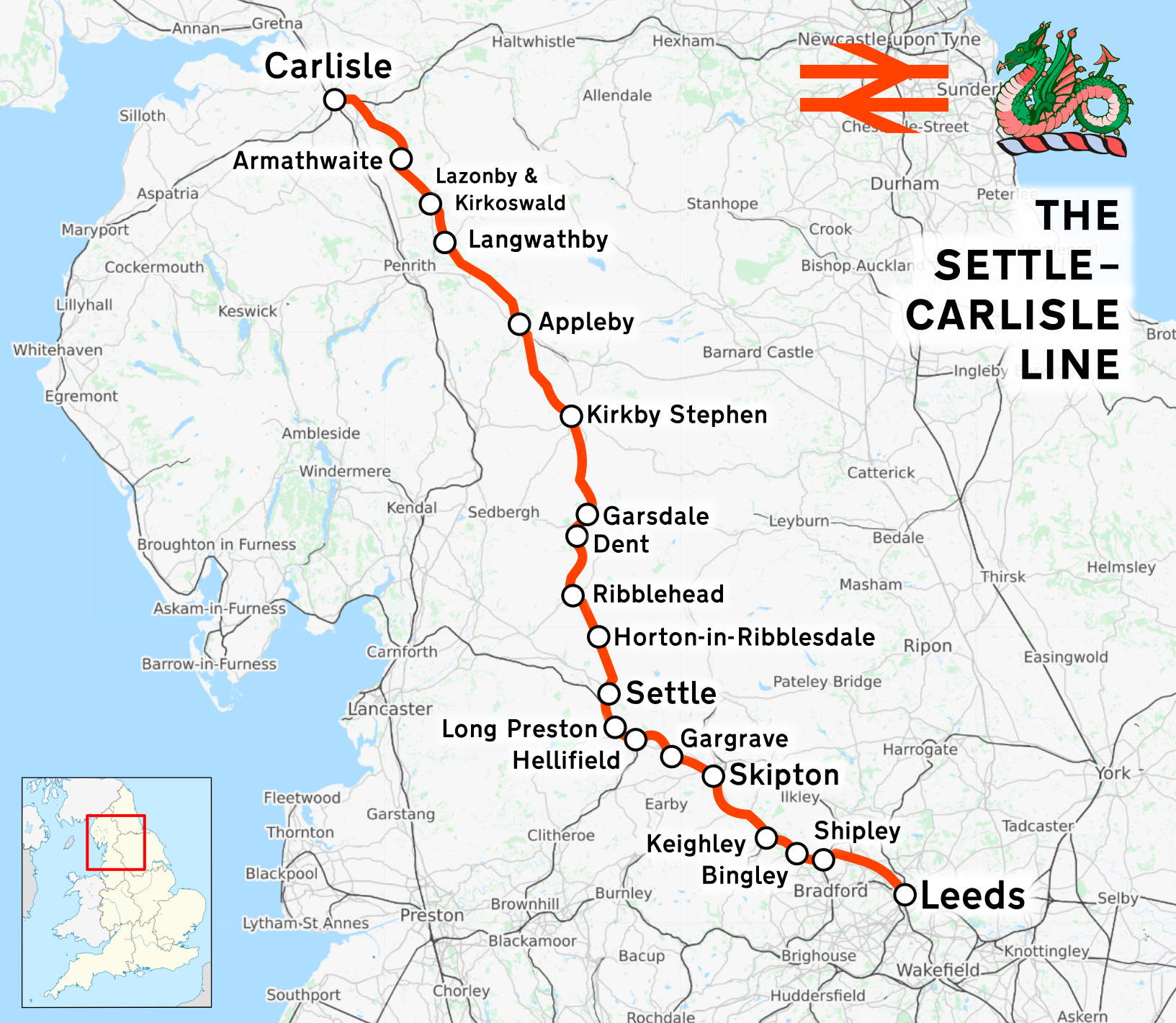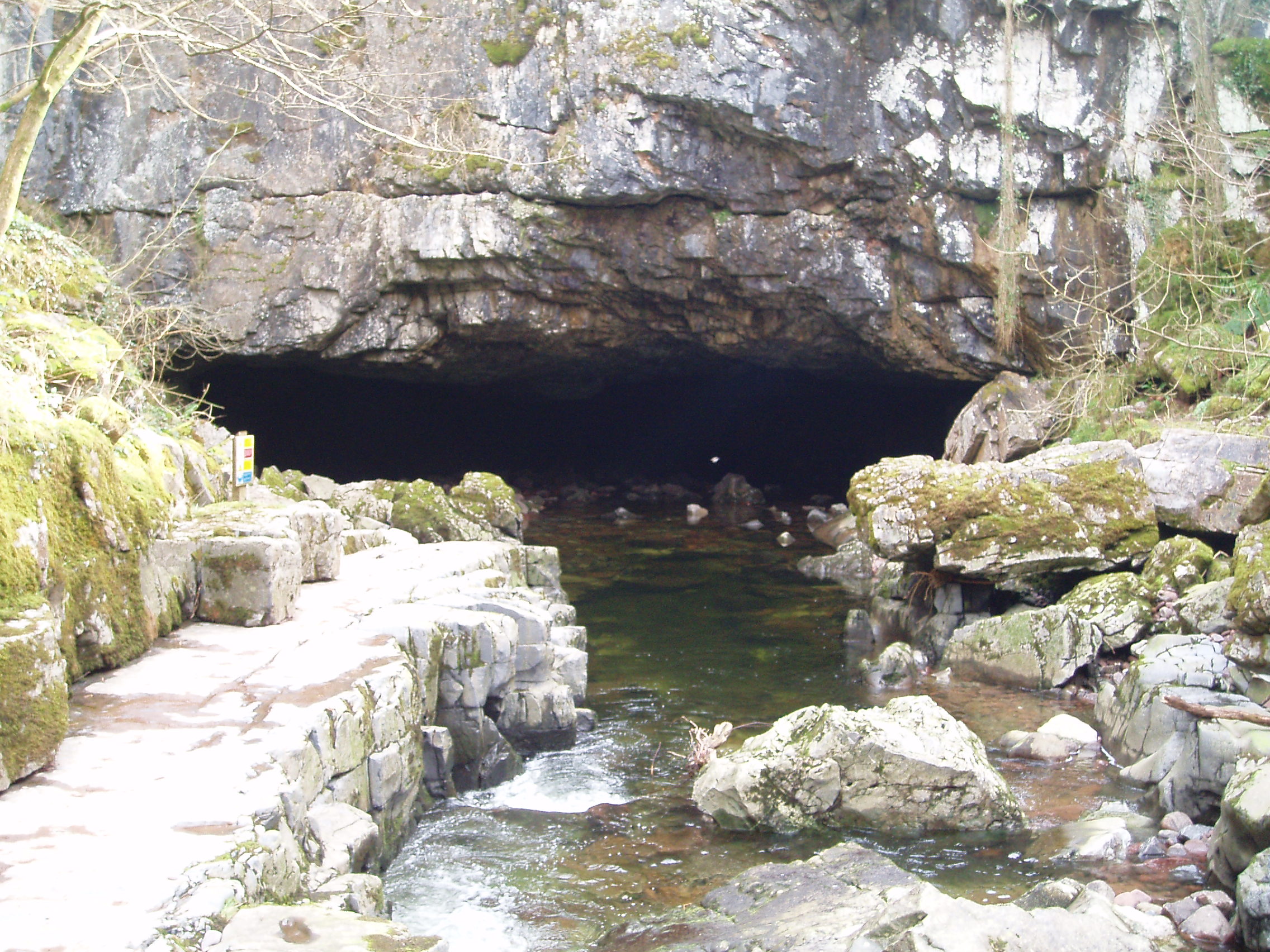|
Alum Pot
Alum Pot is a pothole with a large open shaft at a surface elevation of on the eastern flanks of Simon Fell, North Yorkshire, England. It connects with nearby Long Churn Cave and Diccan Pot. The pot is accessed via a 1-km private track on payment of a small fee from Selside Farm in the hamlet of Selside in Ribblesdale. Alum Pot has variously been known as Allan, Alan, Allen, Hellen and Hell'n. History In 1847 John Birkbeck John Birkbeck (6 July 1817 – 31 July 1890) was a Yorkshireman, banker, alpinist, and pioneer potholer. Early life and career Born in Settle and educated at the local Giggleswick School and Trinity College, Cambridge (although, as a Quaker, ... undertook the first partial descent of Alum Pot from Long Churn Cave which did not reach the floor of the shaft. He returned the following year and made a successful descent, when a group of nine men were lowered to the shaft floor in a large bucket winched down by a group of railway workers. Another succe ... [...More Info...] [...Related Items...] OR: [Wikipedia] [Google] [Baidu] |
Simon Fell (Yorkshire Dales)
Simon Fell is a subsidiary summit on the north east ridge of Ingleborough, a mountain in the Yorkshire Dales in Northern England. With a height of and a prominence of , it is classified as a Hewitt Hewitt may refer to: Places ;United Kingdom * Hewitt (hill), Hills in England, Wales and Ireland over two thousand feet with a relative height of at least 30 metres ;United States * Hewitt, Minnesota, a city * Hewitt, Texas, a city * Hewitt .... Peaks of the Yorkshire Dales Hewitts of England {{Craven-geo-stub ... [...More Info...] [...Related Items...] OR: [Wikipedia] [Google] [Baidu] |
North Yorkshire
North Yorkshire is the largest ceremonial county (lieutenancy area) in England, covering an area of . Around 40% of the county is covered by national parks, including most of the Yorkshire Dales and the North York Moors. It is one of four counties in England to hold the name Yorkshire; the three other counties are the East Riding of Yorkshire, South Yorkshire and West Yorkshire. North Yorkshire may also refer to a non-metropolitan county, which covers most of the ceremonial county's area () and population (a mid-2016 estimate by the ONS of 602,300), and is administered by North Yorkshire County Council. The non-metropolitan county does not include four areas of the ceremonial county: the City of York, Middlesbrough, Redcar and Cleveland and the southern part of the Borough of Stockton-on-Tees, which are all administered by unitary authorities. The non-metropolitan county and the City of York are within the Yorkshire and the Humber region. Middlesbrough, Redcar ... [...More Info...] [...Related Items...] OR: [Wikipedia] [Google] [Baidu] |
Limestone
Limestone ( calcium carbonate ) is a type of carbonate sedimentary rock which is the main source of the material lime. It is composed mostly of the minerals calcite and aragonite, which are different crystal forms of . Limestone forms when these minerals precipitate out of water containing dissolved calcium. This can take place through both biological and nonbiological processes, though biological processes, such as the accumulation of corals and shells in the sea, have likely been more important for the last 540 million years. Limestone often contains fossils which provide scientists with information on ancient environments and on the evolution of life. About 20% to 25% of sedimentary rock is carbonate rock, and most of this is limestone. The remaining carbonate rock is mostly dolomite, a closely related rock, which contains a high percentage of the mineral dolomite, . ''Magnesian limestone'' is an obsolete and poorly-defined term used variously for dolomite, for lime ... [...More Info...] [...Related Items...] OR: [Wikipedia] [Google] [Baidu] |
Pit Cave
A pit cave, shaft cave or vertical cave—or often simply called a pit (in the US) and pothole or pot (in the UK); jama in South Slavic languages scientific and colloquial vocabulary (borrowed since early research in the Western Balkan Dinaric Alpine karst)—is a type of cave which contains one or more significant vertical shafts rather than being predominantly a conventional horizontal cave passage. Pit caves typically form in limestone as a result of long-term erosion by water. They can be open to the surface or found deep within horizontal caves. Among cavers, a pit is a vertical drop of any depth that cannot be negotiated safely without the use of ropes or ladders. Pit caving Techniques Exploration into pit caves ("vertical caving", also called "potholing" in the UK and "pit caving" in US English) requires the use of equipment such as nylon kernmantle rope or cable ladders. The specialized caving techniques of single rope technique (SRT) is common practice and the prefer ... [...More Info...] [...Related Items...] OR: [Wikipedia] [Google] [Baidu] |
Long Churn Cave
Long Churn Cave is a cave in the Ingleborough area of the Yorkshire Dales. First explored in 1870, it has become a popular location for beginner cavers and it contains the most famous squeeze in the Dales, the "Cheesepress". It is near Selside, about north of Ingleton, North Yorkshire. Access is by permission from the landowner at Selside Farm after payment of a nominal fee. Geology Created in limestone by the slow corrosion of slightly acidic rainwater over millions of years, the cave is split into two parts, "Lower Long Churn" and "Upper Long Churn", each active with a stream, and is connected to the nearby Alum Pot and Diccan Pot. Upper Long Churn can be entered via descent of a waterfall into "Dr Bannister's Handbasin", a moderately deep pool of water, and comprises a single long passage. Lower Long Churn leads to an exit into Diccan Pot, followed by the "Cheesepress", a narrow squeeze which is notorious for its tightness but which can be bypassed. The following part of the ... [...More Info...] [...Related Items...] OR: [Wikipedia] [Google] [Baidu] |
Selside, North Yorkshire
Selside is a small village in Ribblesdale in North Yorkshire, England. It lies north west of Horton in Ribblesdale. Selside was mentioned, in the form ''Selesat'', in the Domesday Book, when it was held by Roger of Poitou. The place name is derived from the Old Norse Old Norse, Old Nordic, or Old Scandinavian, is a stage of development of North Germanic languages, North Germanic dialects before their final divergence into separate Nordic languages. Old Norse was spoken by inhabitants of Scandinavia and t ... ''selja'' "willow" and ''sǽtr'' "mountain pasture" or "shieling". Selside lies on the Settle to Carlisle railway line. The Selside signal box, built in 1907, was moved in 1976 from the line to Steamtown Carnforth in Lancashire. References External links {{authority control Villages in North Yorkshire Ribblesdale ... [...More Info...] [...Related Items...] OR: [Wikipedia] [Google] [Baidu] |
Ribblesdale
Ribblesdale is one of the Yorkshire Dales in England. It is the dale or upper valley of the River Ribble in North Yorkshire. Towns and villages in Ribblesdale (downstream, from north to south) include Selside, Horton-in-Ribblesdale, Stainforth, Langcliffe, Giggleswick, Settle, Long Preston and Hellifield. Below Hellifield (sometimes below Settle) the valley of the river is generally known as the Ribble Valley. Above Settle the dale is within the Yorkshire Dales National Park. It is a popular tourist area, particularly for walking. The Yorkshire Three Peaks rise to the east and west of the dale. The Ribble Way runs the length of the dale. At the head of the dale is the Ribblehead Viaduct, crossed by the Settle to Carlisle railway which runs through the dale. Quarrying has been an important industry within the dale, and three quarries are still being worked; Arcow and Dry Rigg quarries produce gritstone (greywacke), and Horton Quarry produces limestone. The dale was ... [...More Info...] [...Related Items...] OR: [Wikipedia] [Google] [Baidu] |
John Birkbeck
John Birkbeck (6 July 1817 – 31 July 1890) was a Yorkshireman, banker, alpinist, and pioneer potholer. Early life and career Born in Settle and educated at the local Giggleswick School and Trinity College, Cambridge (although, as a Quaker, he could not take a degree) he spent most of his life in his home town where he was a partner in the Craven Bank, which his family had established in 1791. He was also a justice of the peace in later life. The family home was Anley (now a nursing home). Caving His name is remembered for his involvement in some early explorations of some of the potholes of Ingleborough, especially Gaping Gill and Alum Pot, although the records are sparse. Around 1842, Birkbeck had the water from Fell Beck diverted down 'the Birkbeck Trench' and went first 100 and then 190 feet down the Main Shaft of Gaping Gill, where there is a ledge which now bears his name, but then 'barred further descent'; no further attempts reached the bottom until Martel reache ... [...More Info...] [...Related Items...] OR: [Wikipedia] [Google] [Baidu] |
Navvy
Navvy, a clipping of navigator ( UK) or navigational engineer ( US), is particularly applied to describe the manual labourers working on major civil engineering projects and occasionally (in North America) to refer to mechanical shovels and earth moving machinery. The term was coined in the late 18th century in Great Britain when numerous canals were being built, which were also sometimes known as "navigations", or "eternal navigations", intended to last forever. Nationalities A study of 19th-century British railway contracts by David Brooke, coinciding with census returns, conclusively demonstrates that the great majority of navvies in Britain were English. He also states that "only the ubiquitous Irish can be regarded as a truly international force in railway construction,"Brooke (1983). Page 167. but the Irish were only about 30% of the navvies. By 1818, high wages in North America attracted many Irish workers to become a major part of the workforce on the construction of t ... [...More Info...] [...Related Items...] OR: [Wikipedia] [Google] [Baidu] |
Settle–Carlisle Line
The Settle–Carlisle line (also known as the ''Settle and Carlisle'' (S&C)) is a main railway line in northern England. The route, which crosses the remote, scenic regions of the Yorkshire Dales and the North Pennines, runs between Settle Junction, on the Leeds–Morecambe line, and , near the English-Scottish borders. The historic line was constructed in the 1870s and has several notable tunnels and viaducts such as the imposing Ribblehead. The line is managed by Network Rail. All passenger services are operated by Northern apart from temporary diverted services (due to closures of the West Coast Main Line) and are part of the National Rail network. Stations serve towns such as Settle in North Yorkshire, Appleby-in-Westmorland in Cumbria and small rural communities along its route. In the 1980s, British Rail planned to close the Settle–Carlisle line. This prompted a campaign to save the line by rail groups, enthusiasts, local authorities and residents along the rout ... [...More Info...] [...Related Items...] OR: [Wikipedia] [Google] [Baidu] |
List Of UK Caving Fatalities
This is a list of recreational caving fatalities in the United Kingdom. It includes all verified deaths associated with the exploration of natural caves and disused mines in the modern era (post 1880). Deaths involving members of the general public who may have slipped down a shaft, or wandered into a cave without being aware of the risks, have been excluded. Caving cannot be considered a particularly dangerous pastime. In 2018, there were up to 4,000 regular cavers in the UK, and about 70,000 people who went on instructor-led courses into caves in the Yorkshire Dales, but there were no fatalities. List of fatalities The following is a list of the 136 identified recorded fatalities associated with recreational caving in the UK. The main causes of death have been drowning when cave diving, drowning as the result of flooding or negotiating deep water, injuries incurred from falling from a height, and injuries incurred as the result of rock falls. In ten cases the bodies have no ... [...More Info...] [...Related Items...] OR: [Wikipedia] [Google] [Baidu] |





